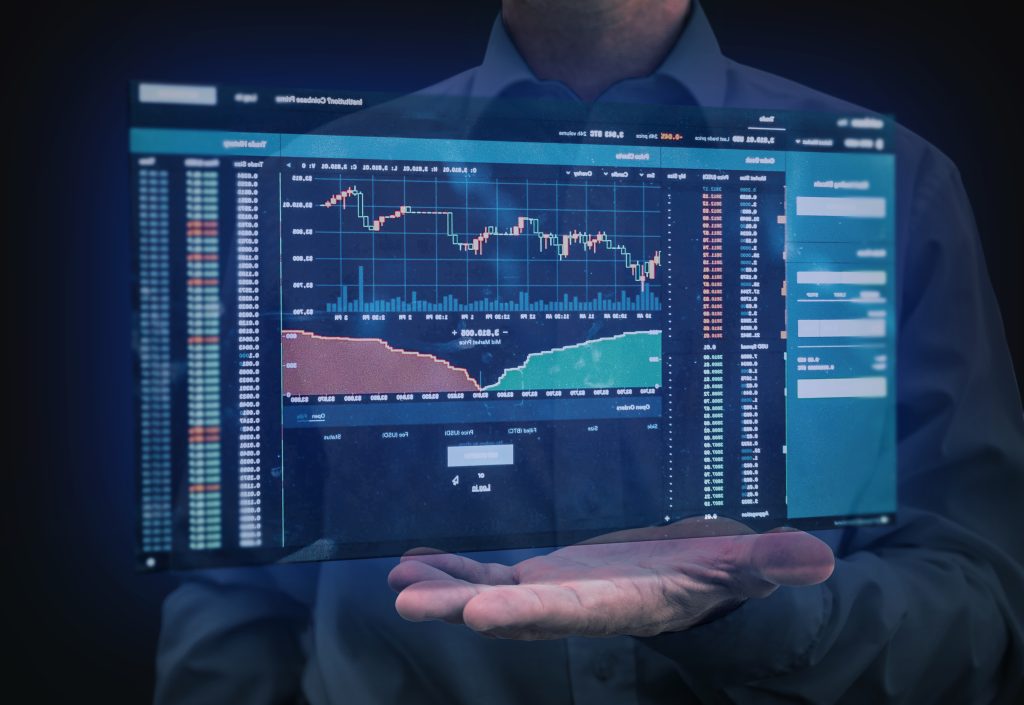
If you’ve ever had a taste of the world of trading options and futures, you know there is a lot of complexity and nuance to the world of finance and investment. From the dizzying array of trading products available to understanding the role of technical analysis and market cycles, beginners may feel overwhelmed by the sheer breadth of knowledge needed to navigate these waters. Good news – you don’t need to know it all to get started.
In this comprehensive guide, we’ll look at the essentials of trading in options and futures and provide a clear practical framework for getting started. We’ll look at the different kinds of options and futures, the basic opportunities and risks associated with trading either type of product, and provide strategies for creating and managing these instruments. Whether you are just starting out or have some experience in the financial markets, this guide will provide a strong foundation for making informed decisions about your financial future.
So, don’t worry if the world of options and futures makes your head spin – let’s jump in and learn the fundamentals!
Quick Summary
Options and futures trading are complex markets that require research and guidance for best practises. There are many resources available to help you learn the basics, including books, courses and seminars.
Introduction to Trading Options and Futures in Financial Markets
Trading options and futures are financial contracts that allow individuals to speculate on the underlying price movements of assets without actually taking possession of the underlying asset. Options and futures provide market participants a powerful tool to manage speculative risk while reaping potentially large returns, but they can also come with risks that must be managed as well.
Options provide traders with the ability to buy or sell an underlying asset at a specified price within or before a predetermined time period. Futures are similar to options in that they potentially provide the same benefits and cost structures, however there is an added layer of complexity due to delivery schedules for the underlying asset.
It is important for any individual trading, investing or speculating in options or futures to educate themselves as much as possible. Novice traders should understand how these markets work, the terms used, and how some strategies may impose large risks. Traders should also understand their own investment goals and determine whether options and futures are suitable instruments for their portfolio.
It is important to note that nowadays more than 70% of all trading volume in equity markets involves options and futures, so it’s no wonder why these financial products have become increasingly popular among investors around the world. Now that a basic introduction has been made into trading options and futures in financial markets, let us turn our attention to different types of options and futures.
Types of Options and Futures
Options and futures trading have become increasingly popular due to their ability to offer flexibility and a variety of ways to speculate on the financial markets. There are a few key differences between options and futures, though they serve similar purposes. Before delving into calls and puts, it is important to understand the two different types of options and futures.
Options Trading
Options are derivatives that give the owner of an option the right, but not obligation to buy or sell an asset at an agreed upon price. It is typically used by individual investors with less capital, as the upfront cost associated with options trading is usually lower compared to futures trading. Additionally, options enable investors to gain exposure to the markets while reducing risk as they have limited downside risk. On the other hand, if the market moves in the opposite direction than expected, investors could lose out on opportunity cost since they do not have unlimited profit potential like futures traders do.
Futures Trading
Futures contracts provide greater potential for larger profits than options because these agreements require traders to commit to buying or selling an asset at a particular future date under specific terms. Unlike options, futures trade on exchanges subject to government regulation with standard contract sizes and expiration dates. As a result, trades with wider margins can occur which can provide robust profits in rising or falling markets depending on whether one chooses long or short positions. However this could also lead to greater losses relative to investments made through options trading due to higher leverage and potential for unlimited losses.
Although there are different advantages and disadvantages of each type of investment vehicle – both futures and options provide investors with powerful toolsets needed for intraday speculation on the markets. Now that we’ve explored the basics of options and futures, let’s dive into calls and puts – two popular tools used within each investment type.
Calls and Puts
When trading options, calls and puts are two of the most popular instruments. Calls give the holder the right to buy an asset at a certain specified price while puts give the holder the right to sell an asset within a set period of time. The reason why both calls and puts are so popular is that they offer traders a way to speculate on the price of an underlying asset without having to own it. Traders can use both long and short positions in order to profit from their transactions. On one hand, calls allow the trader to benefit from an increase in the price of the underlying asset, while puts can help them gain profits if the price decreases.
The costs associated with using calls and puts must also be taken into account. Calls give holders unlimited upside potential but come with risk because the stock price could potentially keep going up without providing any gains. On the other hand, puts can limit losses if the stock falls below a certain level,but traders will have to pay premiums for these contracts which is additional cost that should be factored in when deciding which option to pursue.
It is important for beginners to understand both sides of this debate before investing in either type of instrument. With sufficient knowledge about how these instruments work, traders can then make informed decisions regarding whether or not these calls or puts are worth taking on.
Now that you understand what calls and puts are, let’s move on to the next section and discuss “Long and Short Positions”.
Long and Short Positions
Long and Short Positions are two fundamental strategies used to speculate with options and futures contracts. A long position is a bet on the market going up, while a short position bets on the market going down.
A long position will generate profits when the market rises, so investors generally choose this type of position when they expect the prices of their chosen instrument will increase in value. On the other hand, a short position will generate profits when the markets fall, making it appropriate for investors who expect rates to decrease.
When trading options and futures contracts, both long and short positions come with risks depending on the instruments being traded. Long positions carry unlimited risk in a sharply falling market as there is no price cap or ceiling in place to stop losses. Conversely, short positions also carry unlimited risk in a quickly rising market as there may not be enough margin placed to cover gains. Therefore, both long and short positions need to be carefully monitored.
As traders and investors become more experienced, they can employ certain strategies such as spreads, combos, and straddles that combine both long and short positions. Ultimately, understanding the nuances between buying and selling can be difficult if you’re just beginning trading options or futures markets. Therefore, it’s important to understand these strategies before attempting them yourself.
The next section covers various brokerage platforms available for those wanting to trade options and futures contracts. By utilising tools such as analysis tools, advanced information systems, data analysis tools, charting features, news releases and research capabilities, traders can gain a better understanding of how these instruments move in relation to global financial markets.
Brokerage Platforms for Trading Options and Futures
When it comes to trading options and futures, the brokerage platform you select is one of the most important decisions a trader makes. A well-selected brokerage platform can help save money through lower commissions and fees, provide access to reliable research resources and offer easy-to-use trading tools and strategies. There are several types of brokerage platforms to consider when exploring your options: full-service brokers, discount brokers, online brokers and more.
Full-service brokers typically offer comprehensive investment advice services, including portfolio analysis and asset allocation guidance. They often have a wide selection of financial instruments available for trade, as well as access to high quality research reports. However, full-service brokers usually carry higher commission costs than their discount or online counterparts.
Discount brokers are a popular choice for traders looking for cheaper rates but still desire access to competitive trading platforms. Discounts typically come from lower commission rates or may be incentive based. These online platforms often have basic order types such as limit orders, market orders and stop orders. Basic research may also be included with the discounted rate.
Online brokers offer a cost effective choice for those traders who are comfortable with conducting their own trades without significant support or advice from a broker. Online brokers offer straightforward fees which are lower than both full-service and discount brokers. Additionally, some online brokerages offer advanced pricing models that allow traders to customise their commissions based on their trading style. Many online brokerages provide users with access to the same quality research reports as more expensive full-service brokerages without the added cost.
In light of these various brokerage platforms available for trading options and futures, traders must evaluate the pros and cons of each option to properly weigh the cost versus benefit equation for their own investments portfolios. With this in mind, it is important for investors to choose a broker who provides value beyond simply cheap commissions or free reports; they should look for someone who understands their needs from the outset and has provided them with the best service possible throughout the duration of their account relationship.
Armed with this information, it’s now time to delve deeper into what constitutes the best brokerage platforms when it comes to trading options and futures in today’s ever changing markets. In our next section we’ll explore what aspects investors should examine when making this critical choice.
What are the Best Brokerage Platforms?
When considering trading options and futures, it is essential to choose the best brokerage platform that suits your individual needs. Despite the large range of platforms that are available for traders, there are two primary categories: retail brokerage platforms, or discount online brokers.
Retail brokerage platforms are typically more expensive than their online counterparts but offer a broader range of services including advisory services, technical analysis tools and market research. This can be beneficial for inexperienced traders who may benefit from the support offered by a broker. Furthermore, these platforms often offer lower transaction fees and higher liquidity on some securities.
Discount online brokers have become popular over recent years because of their low commission costs and sometimes faster execution speeds. They provide an easy-to-use interface which simplifies the trading process and their funds are usually well secured by federal regulations. However, these systems are typically geared towards experienced traders as they do not offer advice or analysis tools meaning traders must make all decisions independently.
It is important to remember that both types of brokerage platforms have advantages and disadvantages depending on the experience and objectives of the trader. When choosing a platform, it is important to consider all aspects including commission costs and customer service before making a decision.
To conclude, each trader should assess their needs before deciding which platform is most appropriate when trading options and futures. With this in mind, the next section will explore various strategies that traders use when trading these markets.
Strategies for Trading Options and Futures
Trading options and futures can be a profitable venture for savvy investors, but it is important to have a clear strategy for how to approach these markets. Choosing the right strategies involves understanding the various types of options, leverage associated with different derivative products, and the long-term goals of the investor. Here are some examples of strategies that can help traders make sound investment decisions when trading options and futures:
1. Long Options: Buying a call or put option provides the buyer with the right to buy or sell a particular security at an agreed-upon price for a specified period of time. This strategy can be used to capitalise on market speculation and volatility.
2. Leveraged Futures: Futures contracts allow investors to gain exposure to commodities, currencies and other asset classes with limited upfront capital outlay. This strategy can help traders manage their risk while also taking advantage of volatile pricing moves in these markets.
3. Spreads: Spreads involve taking a simultaneous long and short position in related derivatives. This strategy has the potential to increase profits by reducing overall risk through netting out profits from both sides of the trade.
4. Collar Strategies: A collar strategy is designed to limit losses in an individual’s portfolio while taking advantage of gains that occur as well as limiting downside risk. This technique involves buying an underlying security and simultaneously selling an out-of-the money call option on that same stock with the proceeds being used to purchase protective put options on the same stock.
While each strategy offers its own unique advantages, it is important for investors to understand how different strategies work and which ones will best match their individual objectives and risk profile. With a combination of knowledge about different strategies, risk management techniques such as stop losses, and sound analysis skills, investors of all levels can establish effective trading strategies for their portfolios that are tailored towards meeting their specific financial goals.
Now that we’ve discussed strategies for trading options and futures, let’s move on to discussing how to effectively manage risks associated with these products in our upcoming section about “Managing Risks for Trading Options and Futures”.
Managing Risks for Trading Options and Futures
Managing risks for trading options and futures is perhaps the most important aspect of any successful investing strategy. It is essential that traders understand and develop a plan to manage the risk associated with this type of investment. Risks can be categorised into two main categories: potential losses and holding costs.
The primary risk associated with trading options and futures is potential losses arising from unfavourable price movements in the underlying asset. Traders need to be prepared for potentially significant market losses if prices move in an unexpected direction. Thus, it is important to use stop-loss strategies and to limit exposure by never buying speculative contracts exceeding the amount a trader can afford to lose. In addition, novice traders should consider desk order entry systems, which place limits on daily losses.
The second type of risk pertains to holding costs. These include commissions, interest, margin calls and other fees related to purchasing option contracts or maintaining open positions. When opting for short selling strategies, traders may face additional costs such as paying for “failure to deliver” penalties or negative carrying charges on maintained positions. To avoid these costs, it is advisable to minimise trading frequency, reduce margin requirements and closely monitor margin calls provided by brokers whenever applicable.
Finally, many financial professionals advise against “chasing after profits” or taking on excessive amounts of leverage when trading options and futures, especially for novice investors. Sticking to conservative investing strategies and controlling overall portfolio risk are essential components of a successful trading plan.
Conclusion: Knowing how manage risks associated with trading options and futures is essential in creating a successful investing plan. In the next section we’ll discuss the conclusion of this Beginner’s Guide wherein we will explore the things beginners must consider before entering the world of financial markets.
- Risks involve the potential for substantial losses, as all investments involve some amount of risk.
- Futures contracts involve extra risk due to their leveraged nature, which magnifies both gains and losses.
- Options involve a high degree of risk and may not be suitable for all investors, as options carry an inherent in-the-money value which is partially determined by an underlying security’s volatility.
Conclusion
The concept of trading Options and Futures is a great way to increase your financial resources and knowledge, as well as having the ability to diversify your portfolio. However, as with any investment, there are certain risks and elements of uncertainty that need to be taken into consideration. Thus, it is essential for any potential trader to do their due diligence prior to engaging in such activities. As a beginner, it is best to focus on one type of Option or Future at first until you become more familiar with the market and its conditions.
Traders also need to make sure that they properly understand the difference between Options and Futures, as each has its own unique characteristics and has a different impact on one’s portfolio. Understanding the nuances of these instruments can help traders make good decisions when selecting one over the other depending on the prevailing market conditions.
In addition, risk management should be an important part of any trader’s arsenal when dealing in derivatives markets like Options and Futures. This includes having stop-loss orders in place as well as diversifying among multiple markets in order to protect your investments from wild swings in market prices.
To conclude then, while there are some risks involved with trading Options and Futures, this avenue can also provide investors with a great opportunity to increase their financial knowledge base and possibly yield larger returns than other traditional investment avenues. All traders should however remember to do their homework before diving into this environment. Doing so will help them protect their portfolios from unnecessary losses while allowing them to capitalise on the benefits these instruments have to offer.
Commonly Asked Questions
What kind of financial markets offer trading options and futures?
Trading options and futures are a type of derivative financial market, which means they are based on the price of an underlying asset or security. Options give buyers the right to buy or sell the underlying asset at a pre-agreed price in the future, while futures contracts are more akin to forward contracts, with both sides agreeing to trade the underlying asset at a specified date and price. These derivatives usually exist on commodities, stocks, indices and currencies, but can also include other assets such as bonds.
Options offer greater flexibility than futures as buyers are not obligated to exercise the option at expiry if it is unattractive due to their ability to set their own expiration date and strike price. By contrast, from the outset, both parties involved in a futures contract must honour their agreement.
What are the advantages and disadvantages of trading options and futures in financial markets?
Advantages of trading options and futures in financial markets include:
1. Leverage – Options and futures provide traders with the ability to gain access to a large sum of money while only needing a comparatively small amount of capital, allowing them to take advantage of market movements even if they don’t have a huge portfolio.
2. Flexibility – Unlike other investments, such as stocks and bonds, options and futures strategies can be customised according to the trader’s needs. You can adjust your risk level, protection against losses and exposure to particular sectors or regions depending on the situation in the market.
3. Low cost – Trading options and futures often have less commissions than other investments, making it a more attractive option for some traders.
4. Potentially high returns – With the right strategy and knowledge, traders can potentially make higher returns from their trades compared to traditional investments.
Disadvantages of trading options and futures in financial markets include:
1. High risk – Due to the leveraging capabilities of options and futures, these investments can lead to significant losses if traders aren’t careful with managing their risks appropriately or choosing suitable strategies.
2. Complexity – For inexperienced traders, the complexities of options and futures contracts can be difficult to understand at first which may result in costly mistakes.
3. Market conditions – Those who trade options and futures will be particularly sensitive to changes in market conditions which can have a big impact on returns (positive or negative).
What strategies should be employed when trading options and futures?
When trading options and futures, it is important to employ strategies that are tailored to the goals of the trader. For example, if you are looking to generate short-term profits with limited risk, you could use spread strategies. These involve trading multiple contracts in different expirations—and potentially different strikes—in order to minimise your exposure while allowing you to take advantage of price fluctuations in the market.
Conversely, for those looking for long-term gains, trend following strategies may be more suitable. This requires understanding price trends and using them to make decisions about when to buy or sell. Other long-term strategies could include carrying trades and other complex options trades.
Overall, regardless of which strategy a trader opts for, it is critical that they conduct rigorous research beforehand to ensure that their approach to trading options and futures matches their financial objectives.




